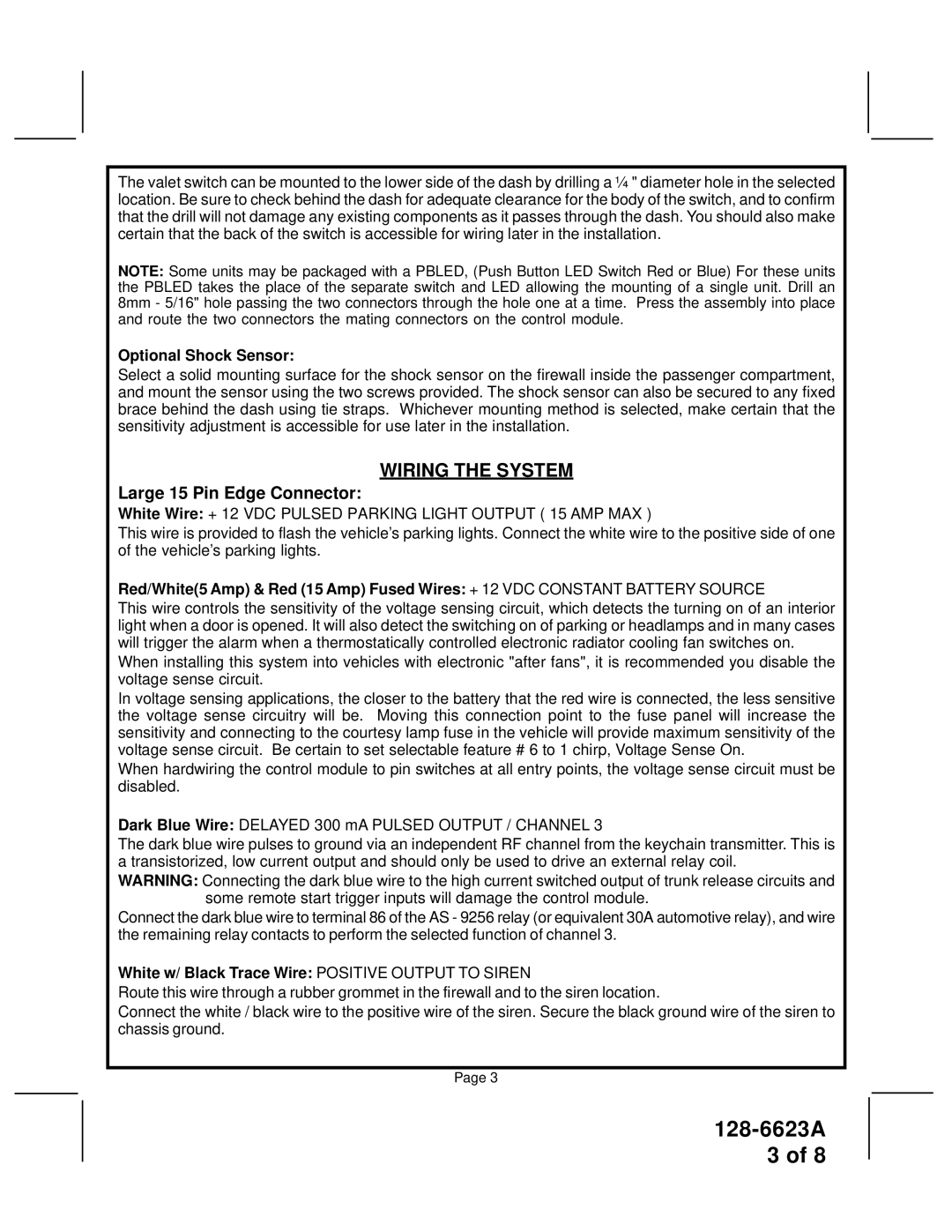
The valet switch can be mounted to the lower side of the dash by drilling a ¼ " diameter hole in the selected location. Be sure to check behind the dash for adequate clearance for the body of the switch, and to confirm that the drill will not damage any existing components as it passes through the dash. You should also make certain that the back of the switch is accessible for wiring later in the installation.
NOTE: Some units may be packaged with a PBLED, (Push Button LED Switch Red or Blue) For these units the PBLED takes the place of the separate switch and LED allowing the mounting of a single unit. Drill an 8mm - 5/16" hole passing the two connectors through the hole one at a time. Press the assembly into place and route the two connectors the mating connectors on the control module.
Optional Shock Sensor:
Select a solid mounting surface for the shock sensor on the firewall inside the passenger compartment, and mount the sensor using the two screws provided. The shock sensor can also be secured to any fixed brace behind the dash using tie straps. Whichever mounting method is selected, make certain that the sensitivity adjustment is accessible for use later in the installation.
WIRING THE SYSTEM
Large 15 Pin Edge Connector:
White Wire: + 12 VDC PULSED PARKING LIGHT OUTPUT ( 15 AMP MAX )
This wire is provided to flash the vehicle’s parking lights. Connect the white wire to the positive side of one of the vehicle’s parking lights.
Red/White(5 Amp) & Red (15 Amp) Fused Wires: + 12 VDC CONSTANT BATTERY SOURCE
This wire controls the sensitivity of the voltage sensing circuit, which detects the turning on of an interior light when a door is opened. It will also detect the switching on of parking or headlamps and in many cases will trigger the alarm when a thermostatically controlled electronic radiator cooling fan switches on.
When installing this system into vehicles with electronic "after fans", it is recommended you disable the voltage sense circuit.
In voltage sensing applications, the closer to the battery that the red wire is connected, the less sensitive the voltage sense circuitry will be. Moving this connection point to the fuse panel will increase the sensitivity and connecting to the courtesy lamp fuse in the vehicle will provide maximum sensitivity of the voltage sense circuit. Be certain to set selectable feature # 6 to 1 chirp, Voltage Sense On.
When hardwiring the control module to pin switches at all entry points, the voltage sense circuit must be disabled.
Dark Blue Wire: DELAYED 300 mA PULSED OUTPUT / CHANNEL 3
The dark blue wire pulses to ground via an independent RF channel from the keychain transmitter. This is a transistorized, low current output and should only be used to drive an external relay coil.
WARNING: Connecting the dark blue wire to the high current switched output of trunk release circuits and some remote start trigger inputs will damage the control module.
Connect the dark blue wire to terminal 86 of the AS - 9256 relay (or equivalent 30A automotive relay), and wire the remaining relay contacts to perform the selected function of channel 3.
White w/ Black Trace Wire: POSITIVE OUTPUT TO SIREN
Route this wire through a rubber grommet in the firewall and to the siren location.
Connect the white / black wire to the positive wire of the siren. Secure the black ground wire of the siren to chassis ground.
Page 3
128-6623A
3 of 8
